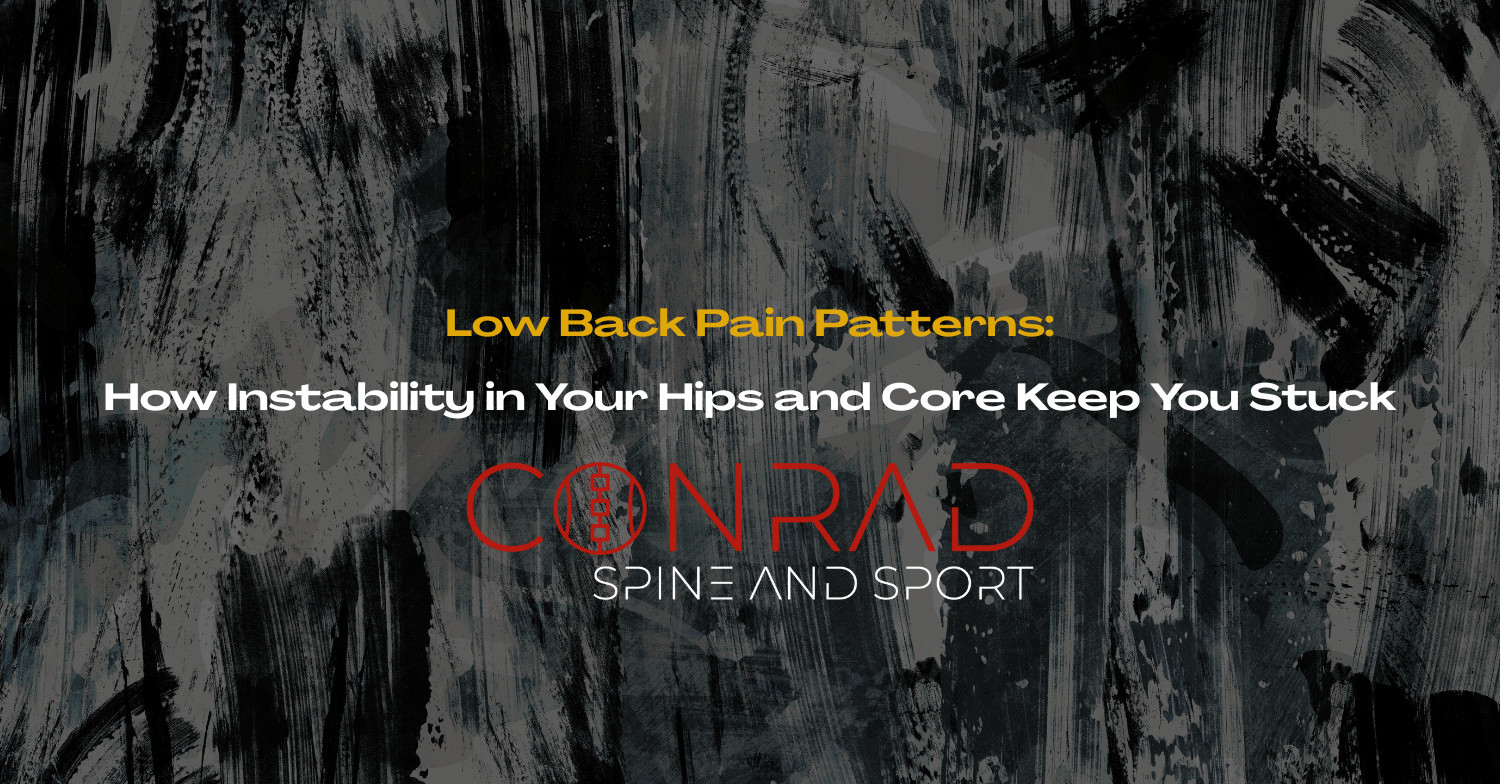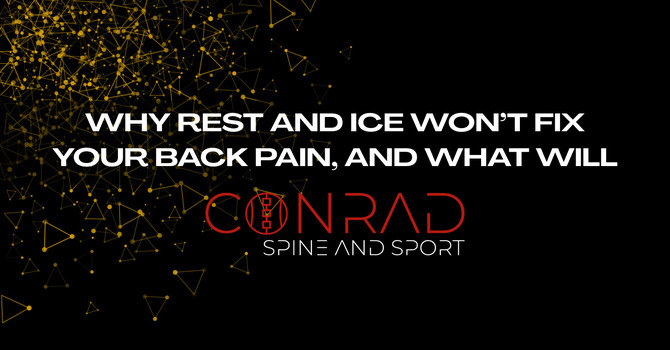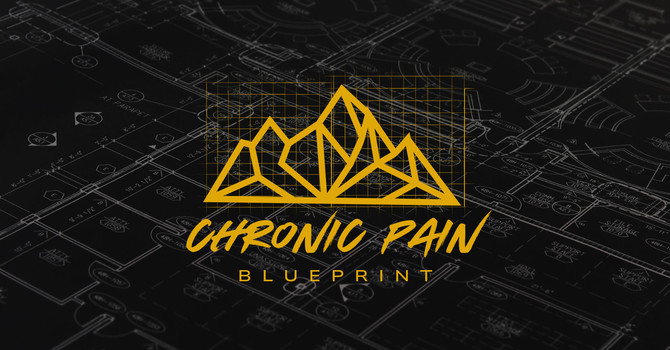
Low Back Pain Patterns:
How Instability in Your Hips and Core Keep You Stuck
Low back pain continues to be one of the most common and costly musculoskeletal problems worldwide. For many, it is not a question of if they will experience back pain, but when. According to the World Health Organization, nearly 80 percent of adults will deal with low back pain at some point in their lives.
What is often missed, however, is that chronic or recurring low back pain is rarely about a single weak muscle, tight spot, or disc problem. It is about an underlying pattern, a failure in how your hips, pelvis, and core share load and communicate with the rest of your body.
At Conrad Spine and Sport, we study these patterns every day. Because if you do not fix the underlying pattern, the pain always finds its way back.
The Pattern Problem
Your body moves as an integrated system. When one area becomes unstable, another area compensates. Over time, these compensations become your new “normal,” and that is where most people get stuck.
The most common pattern we see in low back pain is known as Lower Cross Syndrome. Originally described by Dr. Vladimir Janda, this pattern involves tight hip flexors and lumbar extensors paired with weak or inhibited glutes and deep core stabilizers.
The result is an exaggerated lumbar curve, an anteriorly tilted pelvis, and constant tension through the low back. The problem is not that these muscles are inherently bad, but that they have stopped working together the way they were designed to.
When the deep stabilizers underperform, the global muscles overwork. This imbalance alters how the spine absorbs load and transfers force, creating a cycle of tension, fatigue, and pain.
A 2022 study in the Journal of Back and Musculoskeletal Rehabilitation found that people with chronic low back pain display significant delays in core activation compared to those without pain. Their stabilizers simply do not engage at the right time.
This delay is not a coincidence. It is a learned pattern of instability.
The Role of the Hips
Your hips are designed to be powerful, mobile, and stable all at once. When they lose range of motion or control, the low back becomes the fallback system.
Research published in The Spine Journal (2019) demonstrated a clear link between limited hip extension and chronic lumbar overuse. When your hips cannot move properly, your spine begins to move excessively to compensate.
That overuse creates microstrain and inflammation over time. You may feel “tight,” but it is not true tightness. It is protective stiffness. Your brain is trying to create stability where it senses none.
At Conrad Spine and Sport, restoring hip function is always one of the first steps. We do this through strategic loading, not random stretching. Our goal is to retrain movement control and restore the natural relationship between the hips and the spine.
When the hips are re-centered and stable, the low back no longer has to play the role of stabilizer. It can finally relax.
The Core Is More Than Just Abs
When most people think about core training, they think about crunches or planks. In reality, your core is an entire pressure system that includes your diaphragm, deep abdominals, spinal stabilizers, and pelvic floor.
This system manages intra-abdominal pressure and stabilizes the spine during every movement you make.
A 2021 review published in the European Spine Journal confirmed that individuals with chronic low back pain show delayed activation of the transverse abdominis and multifidus, two deep stabilizers critical for spinal integrity.
When these muscles are not coordinated, the body relies on the larger mover muscles instead. You end up bracing, over-tightening, and exhausting the system rather than stabilizing efficiently.
Our process focuses on teaching your body to breathe, brace, and move as one. This is not about isolated strengthening. It is about restoring timing, sequencing, and control. When that happens, you stop fighting your body and start moving with it.
Instability Versus Weakness
Many patients are told their core is weak. What they actually have is instability.
Weakness refers to strength loss. Instability refers to poor control. You can lift heavy weights and still have instability if your timing and sequencing are off.
A 2020 study in The Journal of Orthopaedic and Sports Physical Therapy showed that chronic low back pain alters recruitment patterns between stabilizers and movers. This means the muscles that are supposed to protect the spine are often late to the party.
At Conrad Spine and Sport, we retrain this pattern. By improving coordination and control, strength naturally follows.
How the Body Compensates
The body always finds a way to complete a movement. If one joint or muscle does not do its job, another one steps in.
If your hips lack control, your lumbar spine compensates by tightening. If your core does not regulate pressure correctly, your paraspinals brace too early and too often.
Over time, these compensations hardwire into your nervous system. What starts as a functional adaptation becomes a dysfunctional habit.
You may feel like you have to constantly stretch your hamstrings or foam roll your back to find relief, but what you are really feeling is your body trying to stabilize itself in all the wrong places.
Why Stretching Alone Falls Short
Stretching can be helpful for short-term relief, but it does not solve the deeper issue of control.
A 2018 study from the Journal of Physical Therapy Science found that static stretching alone produces temporary range gains but no meaningful changes in muscle activation patterns. Without retraining the neuromuscular system, the body defaults back to its original pattern within hours.
This is why we focus on active stability restoration using controlled movement, resistance, and breathwork to teach your system how to stabilize under load.
When you build trust through movement, not tension, the results last.
The Power of Breath
Breathing is not just about oxygen. It is the foundation of spinal stability.
Your diaphragm, pelvic floor, and deep core muscles work as a unit to manage pressure and create dynamic stability. When that system is disrupted by poor posture, stress, or injury, your body loses its ability to stabilize efficiently.
A 2021 paper in the Journal of Bodywork and Movement Therapies demonstrated that improving diaphragmatic function directly enhances spinal stabilization and reduces pain intensity.
In our clinic, breathing is both the first and last step of every protocol. It sets the tone for the nervous system and resets how the body perceives safety and control.
Rebuilding Trust Through Load
The body gains stability through controlled load, not avoidance.
Intelligent loading teaches the nervous system to trust movement again. Whether it is a kettlebell hinge, a split squat, or a cable press, every exercise we prescribe has a purpose — to re-establish communication between your hips, core, and spine.
As strength and control improve, pain fades naturally because the system no longer feels threatened.
The Nervous System Connection
Pain is not always a sign of damage. Often, it is a sign of overprotection.
When the nervous system perceives instability, it creates tension and pain as a defense mechanism. A 2020 publication in Pain Journal explained that central sensitization, where the brain amplifies pain signals, can persist long after the tissue has healed.
By restoring controlled movement, improving breathing, and re-establishing confidence in motion, we help recalibrate how your brain interprets safety.
Pain decreases because the body learns it can move again without threat.
Measuring Progress Objectively
One of the most overlooked pieces of recovery is proof of progress.
At Conrad Spine and Sport, we use the Recovery Index to measure improvement across three key metrics: Tolerance, Control, and Capacity. This allows both doctor and patient to track measurable change throughout care.
When you can see the data, you gain confidence. And confidence changes everything.
Integrated Care for Lasting Results
Low back pain rarely comes from a single source. It involves a combination of biomechanical, neurological, and even metabolic factors.
That is why our approach integrates chiropractic, rehab, and functional medicine into one unified system. Each element works together to rebuild stability, reduce sensitivity, and restore function.
This is not about quick fixes. It is about building a body that performs the way it was designed to.
Final Takeaway
Low back pain is not a random occurrence. It follows a predictable pattern rooted in how your body stabilizes and moves.
When you correct that pattern, when your hips and core begin working in harmony again, the pain no longer has a reason to exist.
At Conrad Spine and Sport, we help patients identify, understand, and fix the root cause of their pain through a process built on science, measurement, and movement.
If you are ready to move beyond short-term relief and experience long-term change, it starts with a Discovery Visit.
See your pattern. Rebuild your foundation. Take back control of your movement and your life.
Book your Discovery Visit today at Conrad Spine and Sport
(Located at Preston and Stockard in Frisco, TX)
References
-
Janda V. (1987). Muscles and motor control in low back pain: assessment and management. Physical Therapy of the Low Back, 253–278.
-
Tsao H, et al. (2022). Delayed activation of deep core muscles in people with chronic low back pain. Journal of Back and Musculoskeletal Rehabilitation, 35(3), 485–493.
-
Kim JY, et al. (2019). Relationship between hip motion and low back pain in adults. Spine Journal, 19(8), 1390–1398.
-
Ferreira PH, et al. (2021). Core muscle activation and timing in chronic low back pain: a systematic review. European Spine Journal, 30(9), 2603–2615.
-
Hodges PW, et al. (2020). Pain-induced changes in motor control. The Journal of Orthopaedic and Sports Physical Therapy, 50(9), 481–489.
-
Azevedo DC, et al. (2018). Effects of stretching and strengthening on postural control and pain in low back pain patients. Journal of Physical Therapy Science, 30(5), 675–681.
-
Janssens L, et al. (2021). The effect of breathing pattern retraining on spinal stabilization and pain. Journal of Bodywork and Movement Therapies, 27, 111–118.
-
Nijs J, et al. (2020). Central sensitization and chronic pain: mechanisms and clinical implications. Pain Journal, 161(Supplement 1), S11–S27.

Nick Conrad
Contact Me



